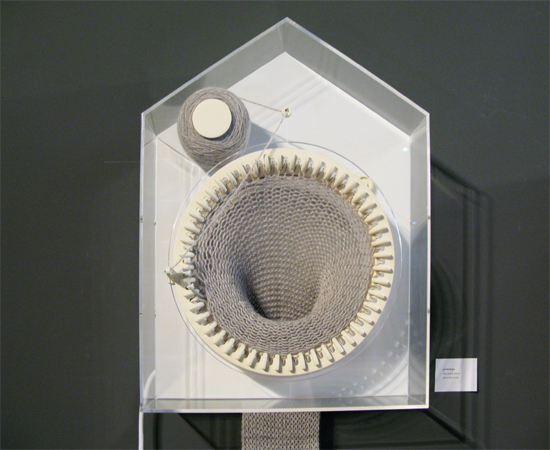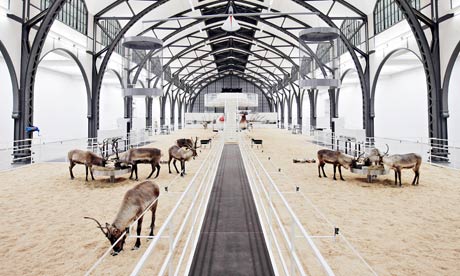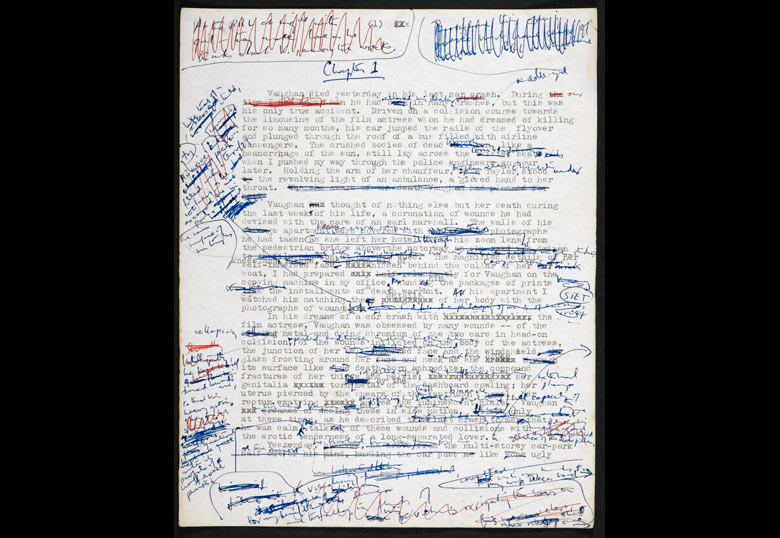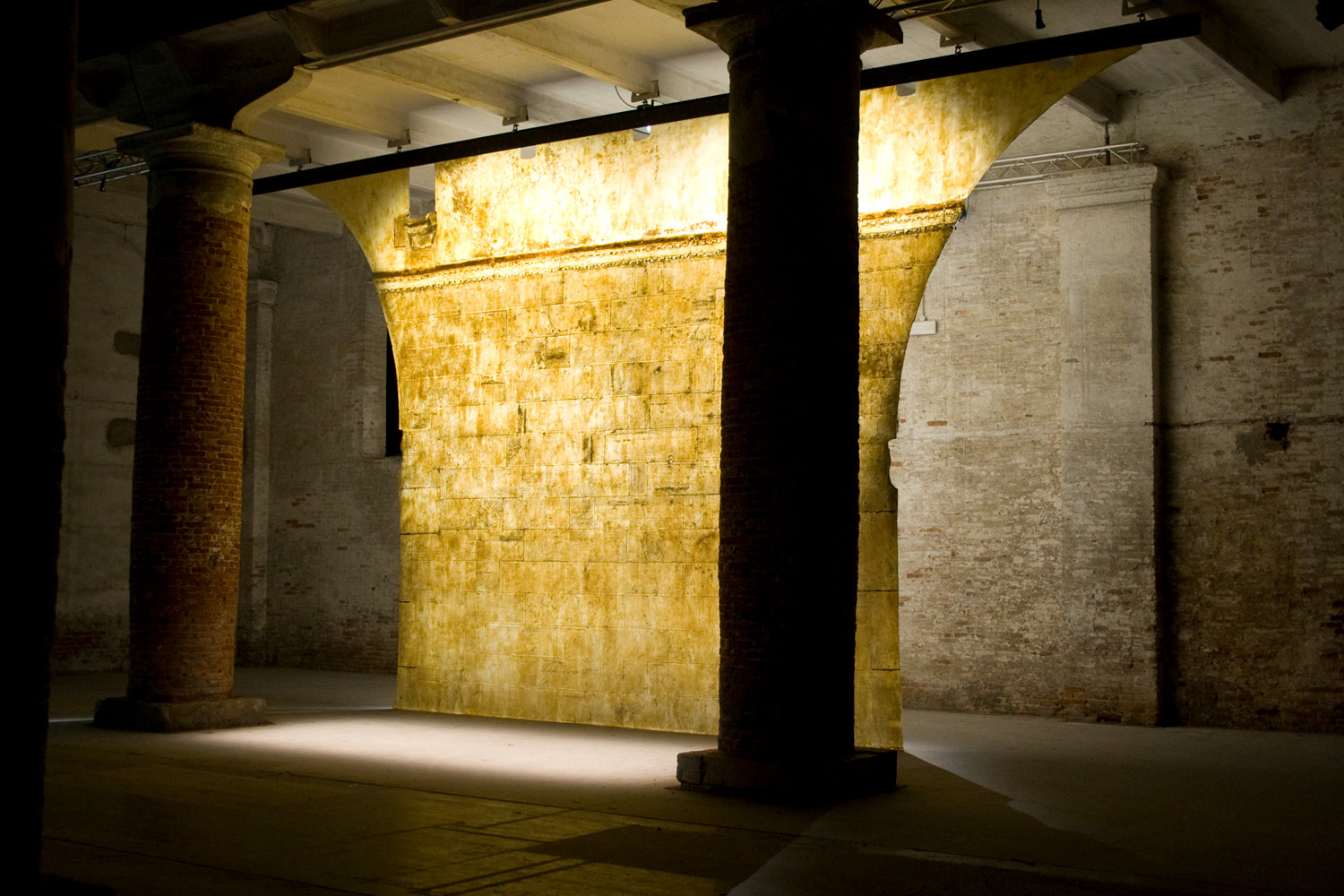” A message placed in a corked glass vial dating back to the Civil War
was finally decoded 147 years after it was originally sent.” – from discovery
Latest Entries »
“…From observation posts, visitors watch the behaviour of the canaries,
mice and houseflies for signs of intoxication and form their own
conclusions. “The experiment is completed in the minds of the visitors,”
says Höller. “It’s very unscientific.” In other words, it’s an open
question whether the reindeer are even fed the mushrooms at all: the
power of suggestion makes you likely to observe something that may not
take place.” – from the guardian
new chris burden installation
While sitting at the chair in front of the scanner you are bathed in structured light, allowing the shape of your profile to be digitized and archived. This portrait, an attempt to capture your likeness in three dimensions, is compared to a library of other portraits captured in the same manner. From these comparisons emerges an outline of the captured form: a playful perspective on your relationship to others, built from light, inviting you to explore further. – Kyle McDonald
POWEr is a performance based on high-voltage electromagnetic
perturbations, by Alexandre Burton and Julien Roy. Using an
audio-modulated Tesla coil as a live instrument, electrical arcs are
generated and transformed in an ongoing, realtime audiovisual process.
Electricity is used as a subtle yet intense material, manifested as an
instrinsically synesthesic phenomenae.
“‘The Clock’ is constructed out of moments in cinema when time is
expressed or when a character interacts with a clock, watch or just a
particular time of day. Marclay has excerpted thousands of these
fragments and edited them so that they flow in real time. While ‘The
Clock’ examines how time, plot and duration are depicted in cinema, the
video is also a working timepiece that is synchronised to the local time
zone. At any moment, the viewer can look at the work and use it to tell
the time.”

photo – Evi Numen/College of Physicians of Philadelphia
“Through eyes as blank as a tilapia’s Stephen and Timothy Quay
contemplate a world that is curious, doubtful, beastly and deranged.
These identical twins, 63, have chronicled their world in more than two
dozen richly detailed short and full-length animated films known for
their gloomy beauty and haunting weirdness. ”
Kodak 1922 Kodachrome Film Test – some of the earliest color film…
reblogged
using the largest existing network, the telephone network, which had
about 500 million subscribers at the time. Using technology he had
constructed himself, he was able to mix calls coming in to ten
telephones in the studios of the WBAI radio station in New York in
different ways, and then broadcast this melange of listeners’ sounds and
noises. Once the listeners who called in had switched their radios on,
he played with the feedback this produced and bundled sounds from
introverted and extroverted callers together. – reblogged from rhizome.

could be so much more but still, a scarf, why not? make those infernal clocks work for us for a change!
“Working with astronomers from the Mauna Kea Volcano telescope, an
image of ‘ancient darkness’
was transmitted on New York television station MNN. Broadcast
for one minute, it revealed
darkness from the furthest point of the observed universe, 13.2
billion years ago, shortly
after the Big Bang and before Earth existed, when stars,
galaxies and the first light began to form.”
– originally seen on rhizome
Anytime a computer application renders an image, it
reserves a chunk of memory from the graphics card and fills it with
information which is then drawn to the screen. The memory is released
once this operation is complete, but its contents are not erased. This
is because each application assumes that whoever will next reserve this
memory will overwrite it with its own data.
Scrape works by reserving some memory and
reading its contents without writing anything to it first, thus
collecting traces left behind by recently used programs.

“This “object” work presents energy by connecting a lemon to an
incandescent light bulb painted yellow. The lemon’s acidity generates a
weak electrical current, causing it to function as a battery, and
illuminate the bulb. Although invisible on the surface of the bulb, the
viewer is led to imagine this “light” as energy being generated. The
pairing of the lemon — having grown storing electromagnetic radiation
from sunshine via photosynthesis, and now, as a detached fruit in the
process of decomposition — with the light bulb presents the existence
of energy as something transformed and transported beyond simple
assumptions of the natural and the artificial, in this unpredictable and
vivid coupling. This was one of BEUYS’ last works. Capri is the name of
the island famous for its lemon production near Napoli.” – from “Light InSight” exhibition site
Nowhere is a three-dimensional milling machine that carves a
landscape relief on a 70x70x10cm large block of hard foam. The machine
receives a stream of live search requests from the german search engines
metager and metager2 (www.metager.de) via the internet.
The users search movements erode rivers and canyons on the surface.
Search requests that shoot through the internet just for a fraction of a
second and generate an answer on the searchers screen, cause the
machine to write a constant growing sculpture into the space. The
continuous stream of changing search requests defines form and rhythm of
this process. …reblogged from rhizome
The Society of the Spectacle (Now in 3D) (2009) – Pascual Sisto (reblogged from rhizome)
One House & 35-40 television sets distributed throughout and all tuned to the same channel. The small flicker of light emanating from each TV is then turned into a ‘pulse’ of light throughout the entire house. As the scenes change, from whatever television program is airing at the moment, the house flashes and pulses as all televisions are in sync with one another. Gives the eerie impressions that the entire house has been gutted to create one vast illuminated space. During commercials it is as if fireworks are going off inside…
This sculpture is a machine that advances two full sized automobiles slowly into one another over a period of 6 days, simulating a head on automobile collision. Each car moves about three feet into the other. The movement is so slow as to be invisible. It is almost impossible to watch a modern action film without at least one automobile wreck.
“Internal noise from a CCD in a light tight box is mapped to audio by sampling pixels in a Quicktime matrix and using those values to manipulate white noise. Software looks for similarity between spectrograms of the noise and a very large set of spectrograms of spoken words. When two are congruent enough the results are spoken by the computer and projected into the space. Software pans across, zooms, and changes the blur, brightness, and contrast of the camera noise, as it looks for hidden images. These are standard EVP strategies for teasing images and sounds from visual and audio noise.” – alan dunning and paul woodrow

…finding derelict structures, crawling inside, illuminating them with small gelled lights and photographing them. The images that result have a stillness that says something about decay and the passage of time, but (thanks to the long exposures he often uses) a hint of life in the streaking contrails of stars and headlights flashing past on nearby interstates. – from boing boing +flickr
Combining Robert Morris’ Box With the Sound of Its Own Making with Baudrillard’s writing on the art auction this sculpture exists in eternal transactional flux. It is a physical sculpture that is perptually attempting to auction itself on eBay. Every ten minutes the black box pings a server on the internet via the ethernet connection to check if it is for sale on the eBay. If its auction has ended or it has sold, it automatically creates a new auction of itself. If a person buys it on eBay, the current owner is required to send it to the new owner. The new owner must then plug it into ethernet, and the cycle repeats itself. – (reblogged from Rhizome)
For what else is this collection but a disorder to which habit has accommodated itself to such an extent that it can appear as order? – Walter Benjamin – “Unpacking My Library”






























